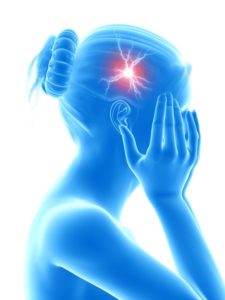 Migraine is a common and disabling condition characterized by nausea, vomiting, sensitivity to light and sound, head pain on one side, and attacks that are of moderate to severe pain. These migraines are diagnosed when an individual has experienced at least five of these attacks in his or her lifetime.
Migraine is a common and disabling condition characterized by nausea, vomiting, sensitivity to light and sound, head pain on one side, and attacks that are of moderate to severe pain. These migraines are diagnosed when an individual has experienced at least five of these attacks in his or her lifetime.
Episodic migraine is characterized by having 14 or fewer headache days per month. Episodic migraine is common worldwide affecting an estimated 17.1% of women and 5.6% of men. Among people with migraine, episodic migraine is the most prevalent type of migraine.
Behavioral factors including levels of stress, daily patterns of sleep and eating, and medication adherence, have demonstrated relationships with migraine symptoms and disability in people with episodic migraine. These behaviors are part of everyday patterns and can be specifically emphasized in clinical practice to improve migraine management.
Inconsistency in daily patterns (e.g., eating, sleeping, exercise, and hydration status) has been associated with increased migraine episodes. Sleep behaviors influence the quality and duration of sleep. A recent daily diary study among 34 people with episodic migraine found that nighttime snacking was associated with a 40% reduction in the odds of experiencing a headache compared to no food. Maintaining a healthy, high quality diet is also important for people with episodic migraine and obesity is associated with higher migraine frequency and intensity. Obesity is also associated with greater amounts of inflammation.
From:



